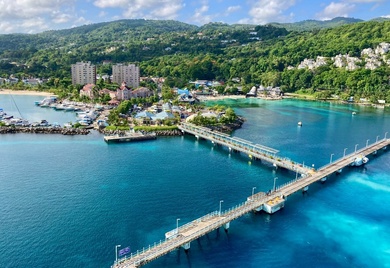How to attract more private capital to PPPs

As an engine of economic growth and poverty reduction, PPPs are on the rise in Latin America and the Caribbean (LAC). In the last decade, there were approximately 1,000 PPP infrastructure projects valued at $360 billion. Especially, in our current market of constrained fiscal budgets and deep social inequalities, PPPs have become more relevant than ever.
Despite this historic uptick, many projects cannot mobilize sufficient private capital. PPPs crowd-in approximately one dollar of commercial finance for every dollar of public finance – a 1:1 ratio which has failed to close the infrastructure funding gap.
On the supply side, institutional investors hold funds equivalent to 20 percent of the region’s GDP - a compelling figure when we seek an additional 2-2.5 percent of GDP to meet demand. Managing long-term assets like pensions and insurance is an ideal match for the long-term tenors of PPP projects. In addition, PPPs offer investors relatively predictable repayment schedules, promising financial returns and protection from inflation.
In the past, private capital, namely from institutional investors, has been cautious. However the ability to mitigate certain risks is making projects more bankable and piquing investor interest.
1. Legal and regulatory risks
Legal and regulatory risks span policies, regulations and institutions. Strengthening them to address market failures, incentivize risk-sharing and regulate consistently reassures investors. Countries are setting up government agencies and units with expertise to supervise PPPs. Advisory services to governments can further strengthen institutions, their regulators and supervisory mechanisms as well as long-term project programming.
2. Project preparation risk
Capacity-building combined with the right incentives can mitigate project preparation risk. This can optimize project efficiency, predictability and investor-friendliness. Technical assistance can support project investment plans and share knowledge with public officials at PPP promotion agencies. Supporting investment planning can align PPP development with nationally- determined contributions. This fosters more climate-resilient, sustainable projects. Advisory also allows governments to determine optimal delivery models by conducting value for money assessments to ensure each asset brings value to government agencies, investors and end-users.
3. Foreign exchange risk
Most PPPs, except for many in the energy sector, where they are often dollar-denominated, rely on local currency. For a PPP to succeed, avoiding foreign exchange risk is key. Governments are limited in the amount of dollars they can guarantee. Mobilizing local currency allows local borrowers to repay in the currency they are generating cash flow, avoiding mismatches. Currency risk can be mitigated by investors setting up local treasuries to issue debt in local currencies or by providing local currency guarantees project-by-project.
4. Construction risk
Construction risk includes expropriation, geological and additional exposures to loss during the construction phase. Investors prefer to invest in PPPs only once construction is complete. However, de-risking projects through liquidity facilities, blended finance, subordinated debt and completion guarantees, which cover construction risk and up to the first 24 months of operation, can bring further comfort and incentivize early entry.
Multilateral development banks are uniquely positioned to offer many of the solutions that address legal, regulatory and project preparation risks. IDB Invest (formerly known as Inter-American Investment Corporation), on behalf of the IDB Group, recently mitigated risks and attracted institutional investors in the Reventazón hydropower project in Costa Rica and Campo Palomas and Colonia Arias wind farms in Uruguay. The next phase seeks to bring institutional investors to PPPs and at construction phase.
Besides, we can lend in local currency, as we are currently doing in Paraguay, Brazil, Colombia and Mexico, and we can also deploy guarantee and debt instruments to mitigate construction risk.
Our in-house experts analyze infrastructure pipelines, support country planning and deploy financial and non-financial products that enhance infrastructure project risk profiles. IDB Invest, on behalf of the IDB Group, recently mitigated risks and attracted institutional investors in the Reventazón hydropower project in Costa Rica and Campo Palomas and Colonia Arias wind farms in Uruguay. The next phase seeks to bring institutional investors to PPPs and at construction phase.
As the region’s PPP pipelines continue to grow, we will deploy the solutions to maximize PPP bankability and mobilize more financing. The boost we see in PPPs brings benefits for governments, private firms and the citizens of the countries we serve.
[gallery type="slideshow" link="none" size="full" ids="7775,7776,7777"]
LIKE WHAT YOU JUST READ?
Subscribe to our mailing list to stay informed on the latest IDB Invest news, blog posts, upcoming events, and to learn more about specific areas of interest.
Subscribe



